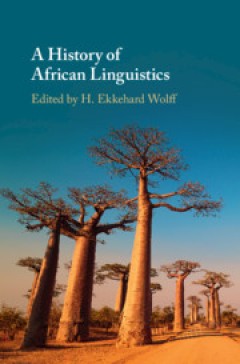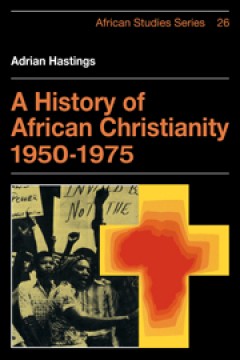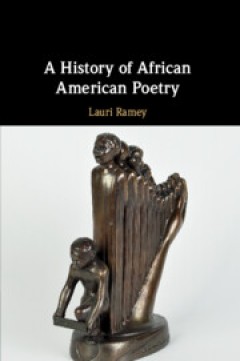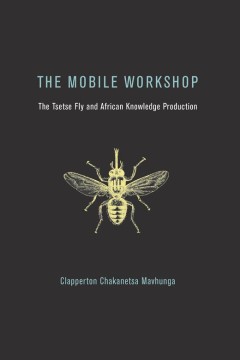Filter by

Waiting to inhale :cannabis legalization and the fight for racial justice
"Tells the stories of those who suffered during the worst social and political failure in the continent's history-the War on Drugs-and what we can do to right the wrongs of the past"--OCLC-licensed vendor bibliographic record.
- Edition
- -
- ISBN/ISSN
- 9780262373128
- Collation
- 1 online resource
- Series Title
- -
- Call Number
- -

Repairing play :a Black phenomenology
"Repairing Play tries to wrest the narrative of play away from white, European notions that rely primarily on pleasure by including different connotations of play that do not rely on the access to the conditions of leisure"--OCLC-licensed vendor bibliographic record.
- Edition
- -
- ISBN/ISSN
- 9780262373883
- Collation
- 1 online resource.
- Series Title
- -
- Call Number
- -

Educating for the anthropocene :schooling and activism in the face of slow vi…
"Based on a multi-sited ethnography among schools and activist groups in India and South Africa, this study offers an exploration of education practices in the context of impoverished, marginal communities where environmental crises intersect with colonial and racist histories and unsustainable presents"--OCLC-licensed vendor bibliographic record.
- Edition
- -
- ISBN/ISSN
- 0262370727
- Collation
- 1 online resource.
- Series Title
- -
- Call Number
- -

Of one blood :or, the hidden self
"Reuel, an African American man passing as white so that he can attend Harvard Medical School, is drawn into a fantastical adventure when he revives a woman's life through mesmerism"--OCLC-licensed vendor bibliographic record.
- Edition
- -
- ISBN/ISSN
- 9780262371131
- Collation
- 1 online resource.
- Series Title
- -
- Call Number
- -

Market institutions in Sub-Saharan Africa :theory and evidence
An analysis of recent data on the economic behavior of market institutions in sub-Saharan Africa, with implications for future research and current policy.In Market Institutions in Sub-Saharan Africa, Marcel Fafchamps synthesizes the results of recent surveys of indigenous market institutions in twelve countries, including Benin, Ghana, Kenya, Madagascar, Malawi, and Zimbabwe, and presents find…
- Edition
- -
- ISBN/ISSN
- 9780262272452
- Collation
- 1 online resource (xx, 521 pages) :illustrations.
- Series Title
- -
- Call Number
- -

A History of African Linguistics
Bringing together a team of leading scholars, this volume forms the first global history of African linguistics as an autonomous academic discipline, covering Africa, America, Asia, Australia, and Europe. Defining African linguistics, the volume describes its emergence from a 'colonial science' at the turn of the twentieth century in Europe, where it was first established mainly in academic ins…
- Edition
- -
- ISBN/ISSN
- 9781108283977
- Collation
- -
- Series Title
- -
- Call Number
- -

A History of African Christianity 1950–1975
The churches in Africa probably constitute the most important growth area for Christianity in the second half of the twentieth century. From being a number of rather tightly controlled 'mission fields' zealously guarded by the great missionary societies, Catholic and Protestant, they have emerged across the last decades in bewildering variety to selfhood, a membership of close on a hundred mill…
- Edition
- -
- ISBN/ISSN
- 9780511563171
- Collation
- -
- Series Title
- African Studies
- Call Number
- -

What Do Science, Technology, and Innovation Mean from Afrika?
Explorations of science, technology, and innovation in Africa not as the product of “technology transfer” from elsewhere but as the working of African knowledge. In the STI literature, Africa has often been regarded as a recipient of science, technology, and innovation rather than a maker of them. In this book, scholars from a range of disciplines show that STI in Africa is not merely th…
- Edition
- -
- ISBN/ISSN
- 9780262342322
- Collation
- -
- Series Title
- -
- Call Number
- 608.76

A History of African American Poetry
African American poetry is as old as America itself, yet this touchstone of American identity is often overlooked. In this critical history of African American poetry, from its origins in the transatlantic slave trade, to present day hip-hop, Lauri Ramey traces African American poetry from slave songs to today's award-winning poets. Covering a wide range of styles and forms, canonical figures l…
- Edition
- -
- ISBN/ISSN
- 9781139548939
- Collation
- -
- Series Title
- -
- Call Number
- -

The Mobile Workshop: The Tsetse Fly and African Knowledge Production
ow the presence of the tsetse fly turned the African forest into an open laboratory where African knowledge formed the basis of colonial tsetse control policies. The tsetse fly is a pan-African insect that bites an infective forest animal and ingests blood filled with invisible parasites, which it carries and transmits into cattle and people as it bites them, leading to n'gana (animal trypan…
- Edition
- -
- ISBN/ISSN
- 9780262345859
- Collation
- -
- Series Title
- -
- Call Number
- 595.76
 Computer Science, Information & General Works
Computer Science, Information & General Works  Philosophy & Psychology
Philosophy & Psychology  Religion
Religion  Social Sciences
Social Sciences  Language
Language  Pure Science
Pure Science  Applied Sciences
Applied Sciences  Art & Recreation
Art & Recreation  Literature
Literature  History & Geography
History & Geography